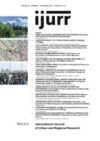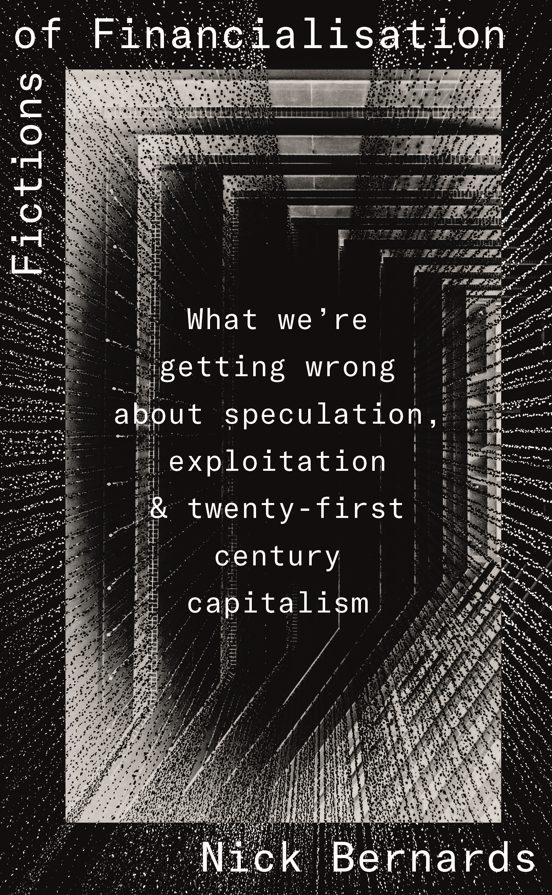In Fictions of Financialization: Rethinking Speculation, Exploitation and Twenty-First Century Capitalism, Nick Bernards offers a useful Marxist critique of financialization discourse grounded in his analysis of the ongoing spatial, organizational and ecological restructuring of global production. Throughout the book, Bernards intervenes in a number of important Marxist debates from value theory and the declining rate of profit to the metabolic rift to the character of the capitalist state. Drawing both from Marx and from the work of critical Marxist scholars Simon Clarke, Diane Elson and Neil Smith, Bernards questions the familiar story about the stagnation of production and the rapid expansion of finance since the global accumulation crisis of the 1970s.
Over the last twenty years, financialization narratives have proliferated to make three principal claims. First, that the history of capitalism since the 1970s can be periodized as an era of financialization. Second, that financialization marks a change in the direction of capital away from productive activities and towards finance. And third, that financialization seeks to expand and subject new fields to speculative accumulation (p. 14). The assumption that the interests of finance capital have come to dominate all aspects of social life, Bernards argues, obscures the contradictions of capital accumulation and the relation of finance to production (p. 81).
As a housing researcher, I find Fictions of Financialization a welcome contribution to the financialization debate. Bernards enquires into the relations between finance capital, production, nature and the state to develop a comprehensive critique of the financialization discourse that prevails in much of the contemporary housing literature. In my reading, he suggests that housing researchers should turn their attention back to such fundamental questions as land rent and the role of capitalist landowners, as well as to how changes in the organization of production determine the social form of housing provision. This book therefore has much to offer researchers seeking theoretical and methodological alternatives to a financialization discourse based on the a priori separation of direct production from any independent means of subsistence within capitalist society.
Bernards begins by uncovering the intellectual history of this financialization discourse. He locates its origins in the work of two authors of very different political persuasions: Giovanni Arrighi and Kevin Phillips. Phillips was a Republican political advisor to Richard Nixon who, in the 1980s, became anxious that rising levels of finance and the decline of the middle class would lead to political instability in the United States. Arrighi, in The Long Twentieth Century, credits Phillips with coining the term financialization and argues that competition between vertically integrated multinational corporations undermined gains from productive innovation, precipitating a shift towards the financialization of the world economy.
Samir Amin and Greta Krippner both built on Arrighi’s work and further popularized the term ‘financialization’. Subsequently, in a 2014 article Natascha van der Zwan identified three discrete strands in a growing body of financialization literature: financialization as a regime of accumulation; financialization as shareholder value; and the financialization of everyday life (p. 36). Yet these strands all mistakenly assume, Bernards argues, that the defining feature of contemporary capitalism is a tendency towards the detachment of capital accumulation from productive activities (pp. 48–9).
According to Bernards, the view that finance capital has become increasingly divorced from production is based on a misreading of Marx’s value theory. He follows Diane Elson in questioning the misplaced concreteness of the orthodox labour theory of value. For Elson, orthodox value theory misses Marx’s distinction between concrete and abstract labour. In her reading, value is not a quantity of surplus labour but the objectification of labour-time as an expenditure of labour power in general; that is, abstract labour (p. 63). Therefore, value is not a substance created at a specific point in the circuit of capital that gives rise to finance capital as a ‘power bloc’, and nor is financial accumulation a separate process of accumulation that is detached from production. Rather, following from what Bernards calls David Harvey’s ‘process view’ of finance capital, financial accumulation is rooted in the labour process and the sale of labour power. Value is therefore ‘a dynamic property of the circuit as a whole’ (p. 68). Production and circulation are not separate spheres that can be understood in isolation from each other but ‘differentiated moments of the circuit of capital which is itself a totality’ (Simon Clarke, quoted by Bernards on page 68).
Bernards shows how the spatial and organizational restructuring of global production since the 1970s, precipitated by the shift to oil and the end of formal empires, brings into question the financialization narrative of stagnating production and ascendant finance as well as the overcapacity theory of declining profitability. Both the ‘monopoly capitalism’ and ‘overcapacity’ sides of the Anglophone Marxist debates on the declining rate of profit are, for him, methodologically nationalist and fail to grasp capitalism as a totality that develops unevenly at the global scale (pp. 89–92). The global shift in chief energy source from coal to oil required a massive expansion of logistics networks to facilitate the circulation of commodities, and the spike in oil prices tightened the monetary constraints on capitalist development in postcolonial countries.
Capital flight from newly independent postcolonial states was the impetus for the creation of offshore tax havens, financial liberalization and agrarian capitalization in those territories, as well as the restructuring of global production over the following decades. The spatial shift in production to China rested on the mobilization of cheap energy in the form of coal and cheap labour through the channelling of rural to urban migrant labour. Meanwhile, transnational firms reorganized, outsourcing manufacturing overseas while retaining more profitable aspects at home such as research and design, marketing/branding and distribution. Once restructured, the hierarchical global production networks restored profitability for leading firms, suppressed profits in manufacturing, and exacerbated social and ecological contradictions (p. 126).
In this reframing of the global accumulation crisis, the restructuring of production also entails a restructuring of the social and material basis of finance capital (in terms of fixed capital, communications systems and various forms of labour) that develops unevenly and may erect new barriers to capital accumulation (p. 97). Following Neil Smith’s production of nature thesis, Bernards argues that crises of overaccumulation are always concentrated within particular spaces, and that spatial and organizational restructuring allows capital to resolve such crises (although only ever provisionally). Spatial and organizational restructuring may in turn lead to crises of underproduction, in which social production is invested in ‘unproductive’ activities to maintain and generate new conditions for capitalist production (pp. 94–6). We should therefore understand the history of capitalist production as ‘a continual uneven restructuring of space, nature, technology and organization aimed at fighting off these tendencies to over- and underproduction’ (p. 98).
The final chapters of the book deal with the relation of finance to nature and the state. Arguing against ‘financialization of nature’ narratives that fixate on assetization and novel financial instruments, Bernards insists that finance has always been part of capitalist production. Land, for example, was financialized from the earliest development of agrarian capitalism (p. 145). In Marx, rent is a portion of the surplus value landowners extract by virtue of their title to the land; hence rent extraction presupposes a relation between capitalist production and land. The need to fix capital into the earth before it can be valorized makes the capitalization of nature especially reliant on credit relations. However, capitalized natures are always produced through the exploitation of productive and reproductive labour, and these relations may be obscured by focusing too narrowly on financialization and assetization. In settler-colonial countries like Canada, for example, turning land into a financial asset was part and parcel of the move to enclosure and the dispossession of Indigenous peoples of their lands (pp. 153–6).
Once capital accumulation is established, the form of the state is then determined by how surplus value is extracted from workers. Under pressure from the world market, the state attempts to create the conditions for ongoing accumulation through different forms of capital located within its territory (p. 171). Whereas financialization narratives argue that the state has become beholden to the growing power of finance capital, Bernards instead asserts that, no matter the relative power of finance capital over the state, the state is compelled to foster the conditions necessary for ongoing capital accumulation. Hence, it is not necessarily a case of international development (for example), being financialized. Rather, states have pursued public-private partnerships in order to entice overaccumulated capital into development projects so that they can make the unproductive investments needed to create the conditions for renewed capital accumulation that may provisionally resolve the crises of underproduction (p. 187).
Bernards closes with a reflection on the political implications of the financialization discourse. Calls to de-financialize the economy or to democratize finance are political dead-ends, he says, because such strategies are premised on recapturing and protecting from finance capital states that are institutionally beholden to the dictates of capital accumulation. Debts and rents are important sites of accumulation that compel the sale of labour power; the mass collective withholding of debt and rent payments does therefore have the potential to bring pressure to bear on capital. However, we should not consider these as alternatives to other forms of class struggle. Primary exploitation in the workplace and secondary exploitation through debt and rent are inherently connected to the extent that ‘indebtedness … is not a new kind of class relationship in which the compulsion to labour is sidelined, but rather a phenomenal form of the wider impersonal compulsions through which capitalist value relations operate’ (p. 206).
Cole Webber, York University
Nick Bernards 2024: Fictions of Financialization: Rethinking Speculation, Exploitation and Twenty-First Century Capitalism. London: Pluto Press.
Views expressed in this section are independent and do not represent the opinion of the editors.

